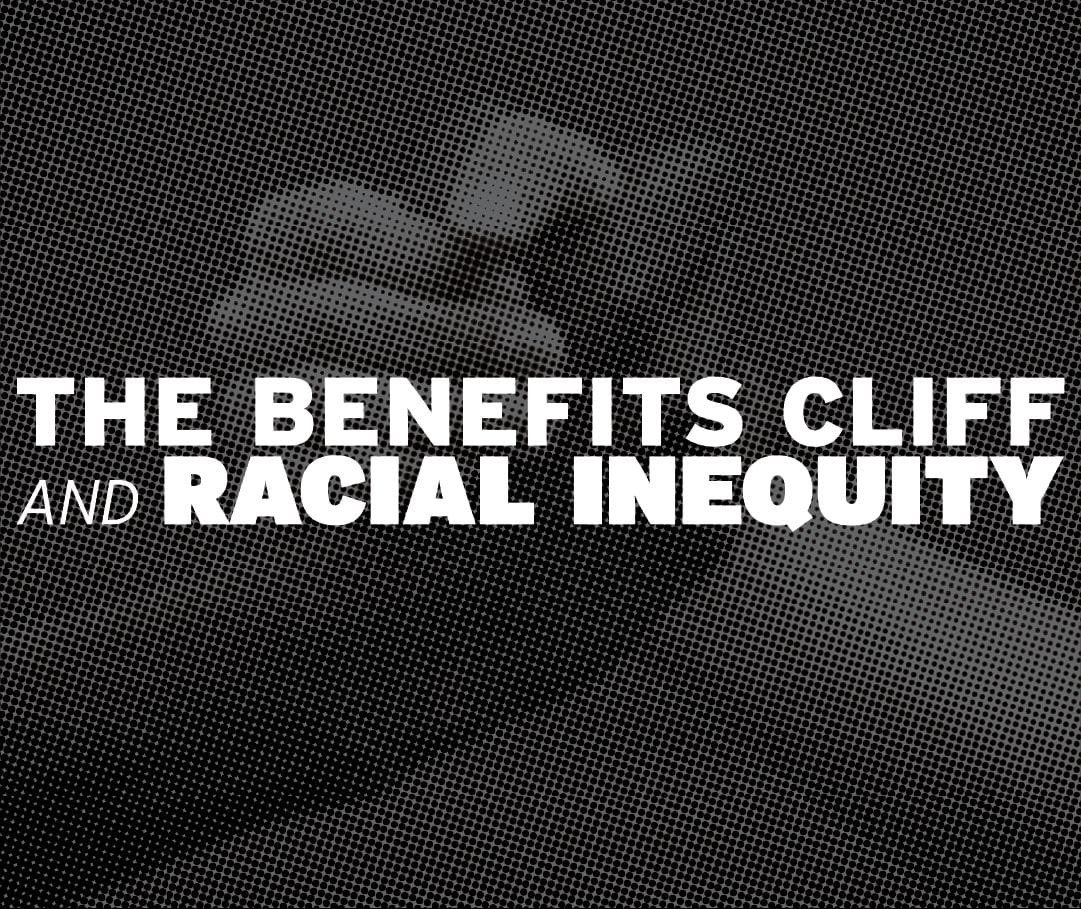The Benefits Cliff and Racial Inequity: Perpetuating Generational Poverty & Keeping Americans Down
 We are still feeling the effects of the centuries of unjust practices and policies along racial lines that have made it difficult to break cycles of poverty. Individuals and families of color across the United States have been disproportionately affected by discrimination that has created limited access to economic mobility and perpetuated a racial income gap. This means that the Benefits Cliff hurts racial minority groups more significantly and prevents us from reaching true equity for all members of our community.
We are still feeling the effects of the centuries of unjust practices and policies along racial lines that have made it difficult to break cycles of poverty. Individuals and families of color across the United States have been disproportionately affected by discrimination that has created limited access to economic mobility and perpetuated a racial income gap. This means that the Benefits Cliff hurts racial minority groups more significantly and prevents us from reaching true equity for all members of our community.
The Benefits Cliff is a phenomenon that occurs when marginal wage increases result in a worse overall financial situation resulting from the loss of public benefits. There are several reasons why the Cliff more severely impacts minority groups, stemming from the fact that Black and Hispanic families have, on average, lower household wealth and income than white families, according to data from the US Census Bureau. This is true throughout the country and right here in Greater Rochester. ACT Rochester’s community indicator dashboard shows that in our nine-county region, 31% of Black people and 28% of Hispanic people live in poverty, compared to just 9% of white families.
To further exacerbate this issue, the benefits cliff makes it harder to escape poverty by keeping hard-working families down. Looking at SNAP benefits alone, and not considering other major means-tested programs including Medicaid, housing assistance, SSI, and TANF, there is a stark difference between Black or African American households and white households that receive public assistance. The same ACT Rochester dashboard found that in Monroe County, an average of 39% of Black or African American households receive SNAP as compared to just 9% of white households. Since households can lose all benefits when they’re even a dollar over the income threshold for public benefits, this cliff is adversely impacting racial minorities disproportionately.
There are additional social and economic factors that make the benefits cliff more severely impact racial and ethnic minorities. For example, the Pew Research Center found that Hispanic and Black families are, on average, larger than white families, and the US Chamber of Commerce Foundation found that childcare subsidies are one of the most severe benefits that are impacted by the cliff phenomenon. Further, the National Association of Realtors found that the homeownership rate is 72.1% for white Americans compared to just 43.4% for Black Americans, and the same US Chamber report identified housing choice vouchers as the overall most severe benefit impacted by the cliff. In the Greater Rochester region, this divide is even more stark, with just 33% of Black residents owning homes as compared to 73% of white residents.
In addition to keeping hard-working individuals and families in poverty, the benefits cliff undermines the efforts of other workforce development programs throughout our country. There are thousands of organizations spending billions of dollars to help connect marginalized communities to meaningful careers, but these programs will never succeed if the individuals placed in new roles are worse off financially due to the benefits cliff.
Now is the time to address these issues and eliminate barriers to success for all Americans. To achieve equality and equity, we need to come together to smooth the benefits cliff and get people out of poverty - not leave them trapped in it.
To learn more about the Benefits Cliff, please visit GreaterRochesterChamber.com/Benefits-Cliff.
